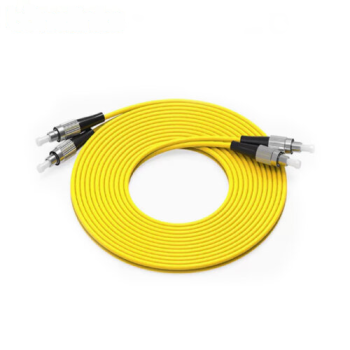In today’s rapidly advancing technological landscape, communication networks play a pivotal role in our daily lives. Fiber optic patch cords are an essential component of these networks, facilitating the transmission of data at lightning-fast speeds. This article aims to provide a comprehensive understanding of fiber optic patch cords, exploring their features and highlighting the numerous benefits they offer.
Understanding Fiber Optic Patch Cords:
A fiber optic patch cord, also known as a fiber jumper or fiber optic patch cable, is a flexible and durable cable used to connect optical devices within a network. It consists of a bundle of optical fibers enclosed in protective casing, with connectors on both ends. These connectors, commonly of the SC, LC, or ST type, allow for easy and reliable connections between devices such as routers, switches, and servers.
Features of Fiber Optic Patch Cords:
High Bandwidth: Fiber optic patch cords have the ability to transmit large volumes of data at incredibly high speeds, making them ideal for applications that require fast and reliable connections.
Low Signal Loss: Unlike traditional copper cables, fiber optic patch cords experience minimal signal loss over long distances. This ensures the integrity and quality of transmitted data.
Immunity to Electromagnetic Interference: Fiber optic cables are not susceptible to electromagnetic interference, providing a stable and secure communication environment.
Compact and Lightweight: Fiber optic patch cords are lightweight and take up less space compared to their copper counterparts, making them easier to install and manage within network infrastructures.
Durability: These cables are designed to withstand harsh environmental conditions, including temperature variations, moisture, and vibrations, ensuring long-term performance and reliability.
Benefits of Fiber Optic Patch Cords:
Faster Data Transmission: With their ability to transmit data at the speed of light, fiber optic patch cords enable faster communication and reduce latency, improving overall network efficiency.
Long Transmission Distances: Fiber optic cables can transmit data over longer distances without experiencing signal degradation, making them suitable for applications that require connectivity across vast areas.
Enhanced Security: Fiber optic patch cords offer a higher level of security due to their immunity to electromagnetic interference. This makes it more difficult for unauthorized users to tap into the transmitted data, ensuring secure communication.
Scalability: Fiber optic patch cords provide the flexibility to scale up network bandwidth and capacity as per the evolving needs of an organization, allowing for seamless expansion and growth.
Future-Proof Technology: Fiber optic patch cords are considered a future-proof investment, as they have the capacity to support higher data rates and emerging technologies, ensuring longevity and adaptability for years to come.
Conclusion:
Fiber optic patch cords are an indispensable component of modern communication networks. Their high bandwidth, low signal loss, immunity to interference, and other features make them a preferred choice for various applications. The benefits they offer, such as faster data transmission, enhanced security, scalability, and future-proofing, contribute to improved network performance and reliability. By understanding the features and benefits of fiber optic patch cords, organizations can make informed decisions when it comes to building robust and efficient communication infrastructures.

















